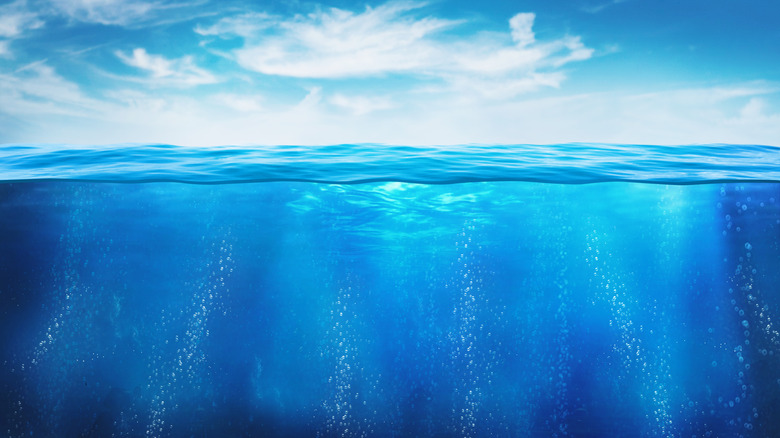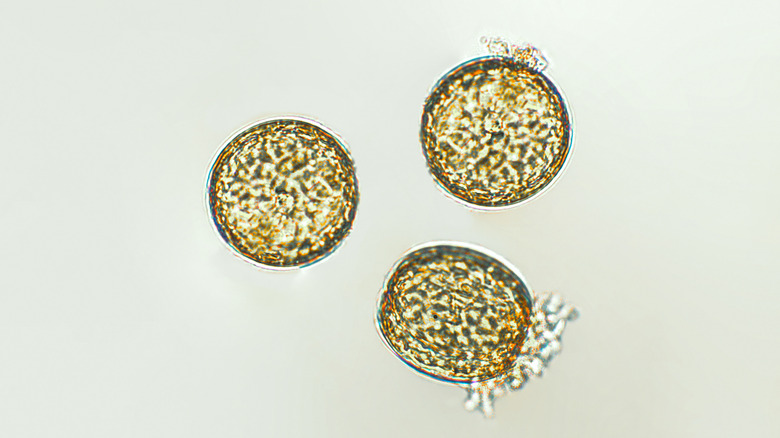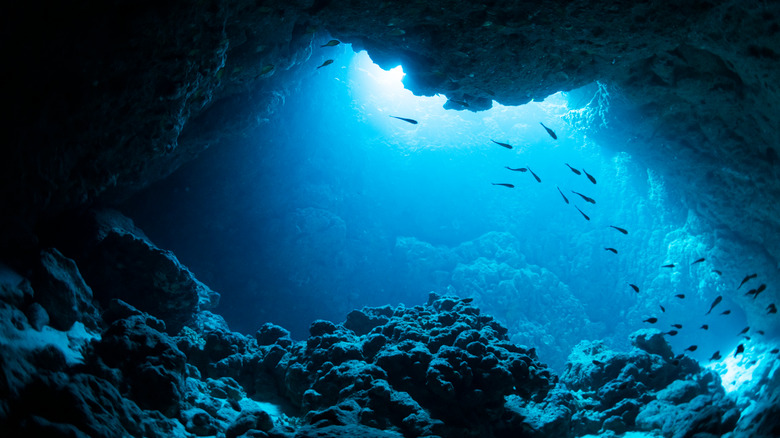There's A Deadly Secret Hidden In The Deepest Parts Of Some Of The World's Seas
Covering 71% of the Earth's surface, oceans and seas spark awe, mystique, and sometimes even fear. While humans have been sailing and studying the Earth's bodies of water for centuries, much is still being discovered. In fact, National Geographic states that around 80% of the Earth's oceans have yet to be seen by humans, let alone mapped out. Scientists have more surface mappings of Mars than the ocean floors on Earth. Despite these unknowns, the impacts of the oceans as a whole are well-documented. Oceans affect temperature and weather patterns, such as the Gulf Stream that carries warmer water to Europe.
Given the surface area of the oceans, it is no surprise that the Earth's overall supply of water is 97 percent salt water (per National Geographic). As technology for exploring the untouched parts of the ocean develops, scientists are consistently discovering more about the salinity and chemical makeup in multiple parts of the ocean.
Scientists found microbes in deep parts of the ocean
Certain parts of the ocean are uninhabitable for life, save for a few species like the angler fish that can survive in complete darkness and under the immense pressure of miles of water above them. In July 2022, Interesting Engineering reported that scientists discovered a unique occurrence in which no living thing visible to the naked eye can survive at all: brine pools.
Brine pools are found at the bottom bodies of water like the Gulf of Mexico, as well as the Mediterranean and Red seas. They are located around one mile below the surface. These pools have no oxygen, but do contain deadly amounts of salt (saline). This is why the only organisms that exist in these pools are "extremophile microbes." These microbes can withstand just that: extreme conditions. Extremophile organisms thriving in places like the brine pools show what conditions can still harbor life or how living things can adapt to different pH, salinity, and radiation levels.
Brine pools are deadly to other living things
Other than revealing what conditions are necessary for life of any size, the brine pools might reveal past weather patterns if they hold runoff from land, as some theories suggest. In other words, the brine pools could show histories of tsunamis, earthquakes, and rainfall. Microorganisms have been known to possess cancer-fighting abilities as well (per Interesting Engineering). Studying them could lead to medical solutions in the future. While the research prospects of brine pools is exciting, the pools are still deadly; killing anything else that gets too close. But if the microbes can survive the extreme conditions and lack of oxygen, scientists behind the brine pool research believe that they could help us learn about the possibilities of life on other planets (per NDTV).
Mother Nature continues to surprise us and also show us why it is valuable to preserve nature on land and sea. Oceans currently face issues like species extinction and pollution. Such threats to biodiversity will negatively affect everything on Earth, including humans as such diversity is needed to support our planet.


